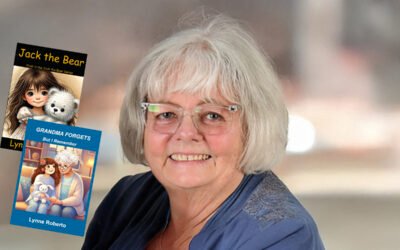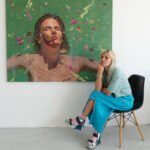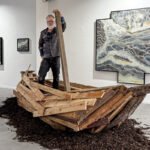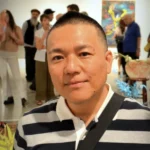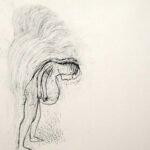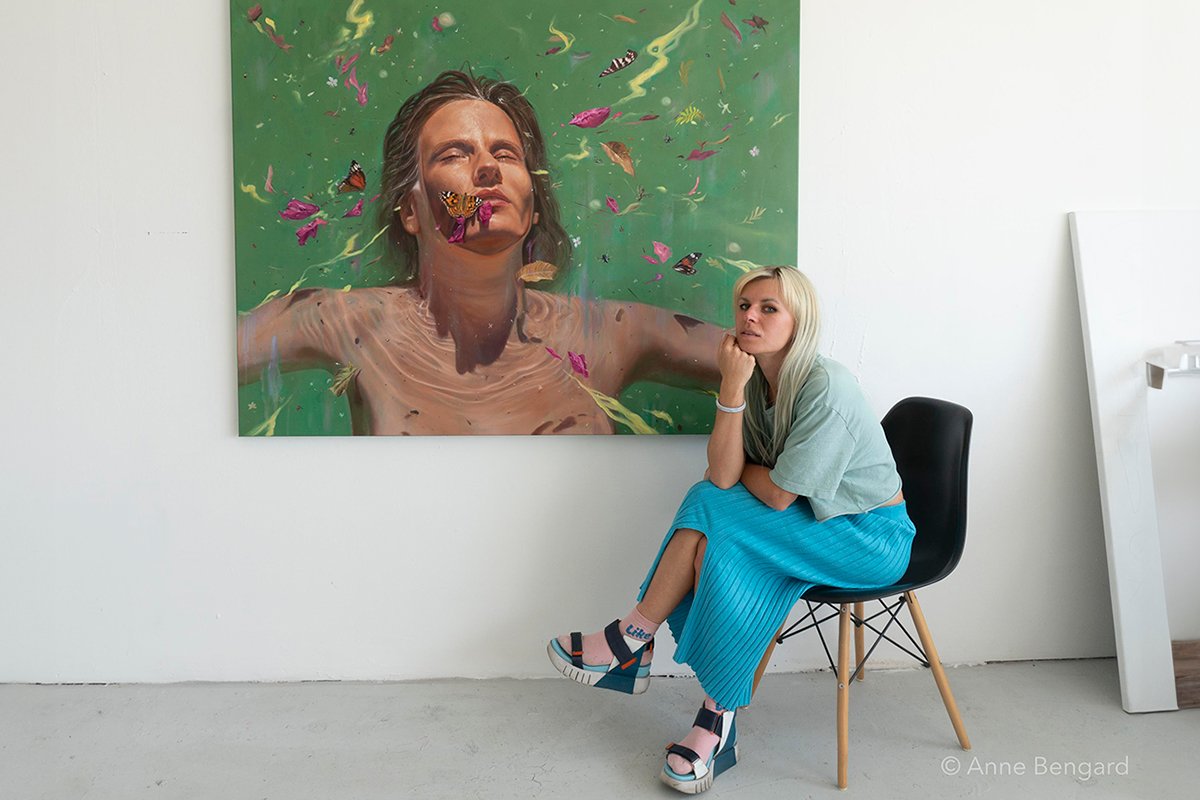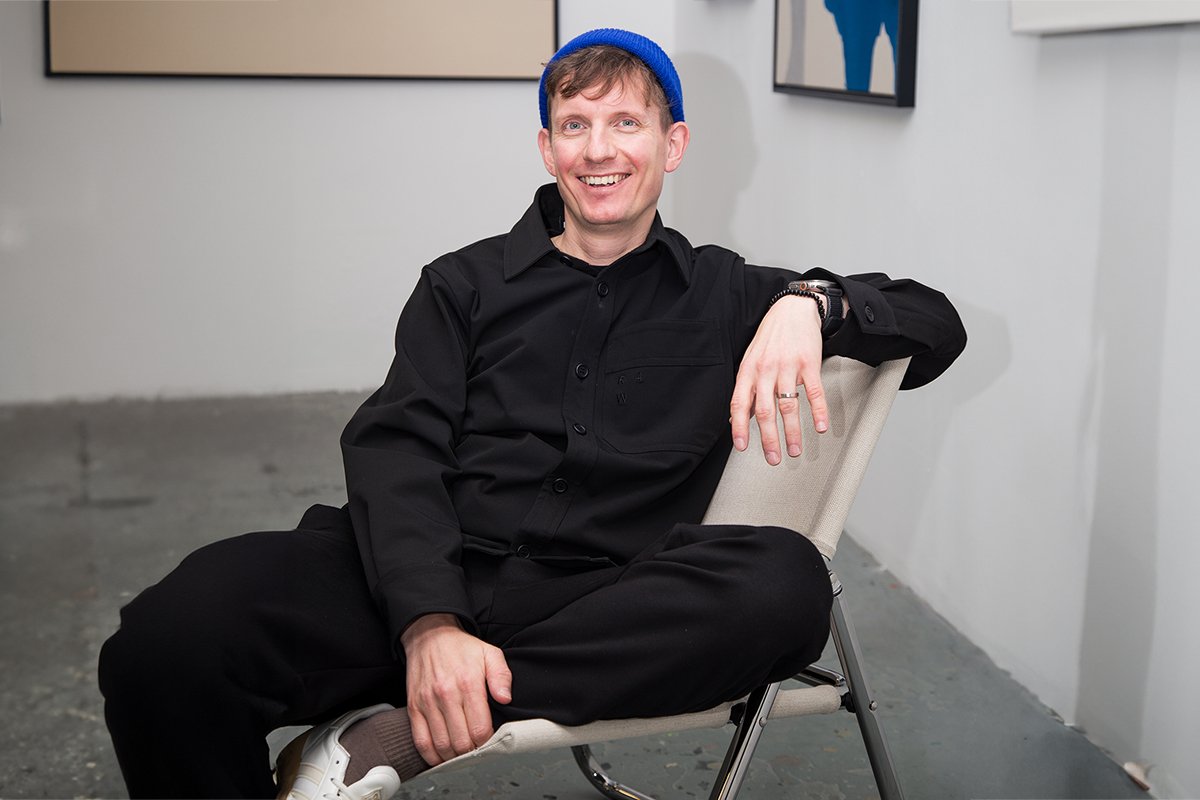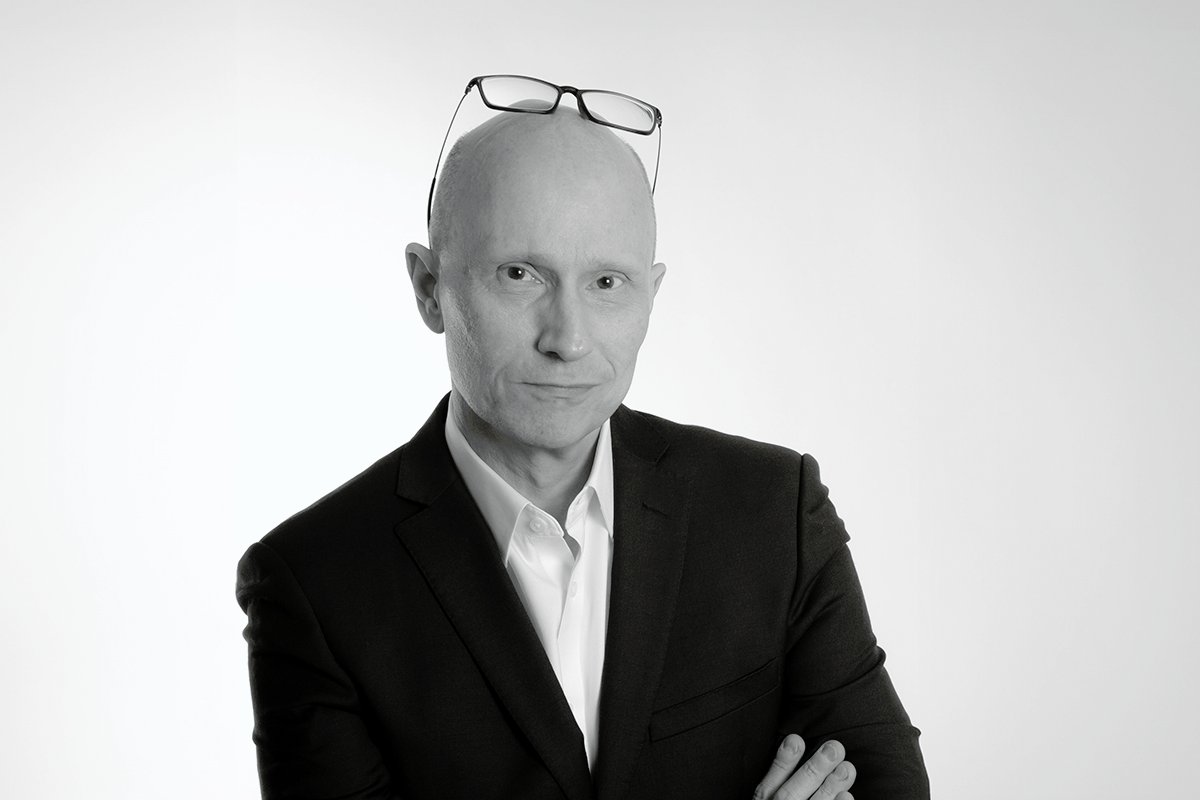Christopher Dunlap Explores Vibrant Patterns and Spatial Depth in Contemporary Art
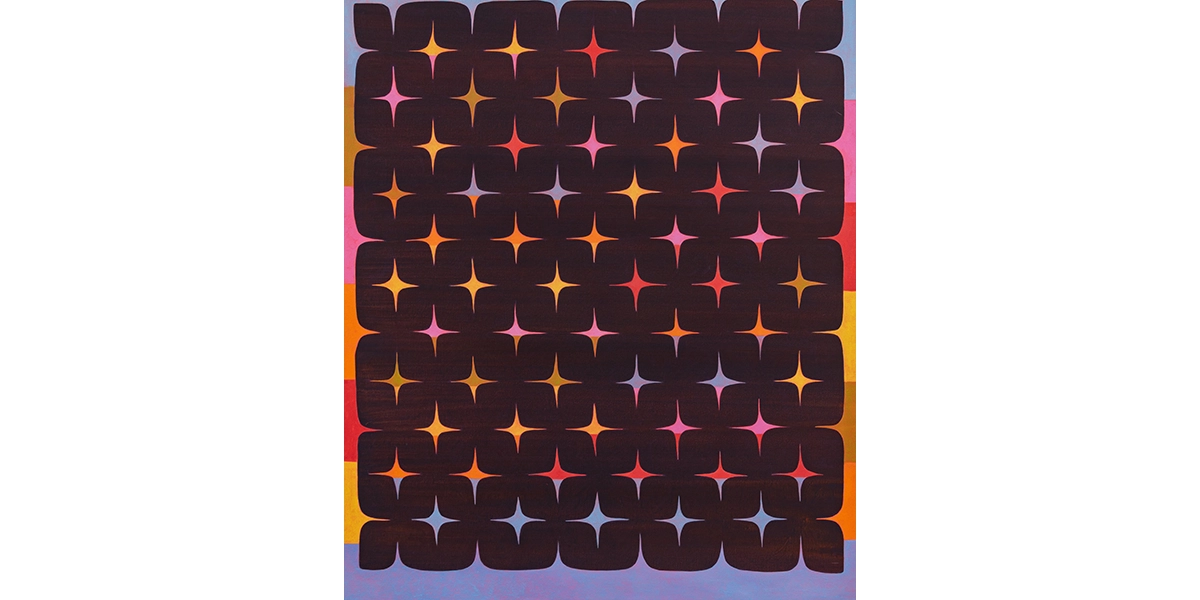
PHOTO: Christopher Dunlap at work in his Harlem studio, where tradition meets innovation in vibrant expressions of contemporary art.
A Journey Through Color and Complexity
Christopher Dunlap delves into his creative process, exploring layers, color dynamics, and the influence of childhood quilting on his vibrant artwork.
Christopher Dunlap stands as a remarkable force within the contemporary art scene, a creator whose works resonate with both a sense of tradition and innovation. Hailing from Pullman, Washington, Dunlap has transformed the inspirations of his youth, such as the intricate quilts crafted by his grandmother, into a sophisticated framework that defines his unique artistic identity. His academic journey, marked by a BFA from the University of Washington and an MFA from the Massachusetts College of Art and Design, has facilitated Dunlap’s continuous exploration of pattern, structure, and color.
In his stunning solo exhibitions at esteemed venues like Marvin Gardens in Ridgewood and Hiromart Gallery in Tokyo, Dunlap captivates audiences with paintings that ooze vibrancy and movement. His group exhibitions have traversed cities from Amsterdam to New York, each showcasing his ability to evoke a sensorial dialogue between the viewer and his art. By layering oil paints and playing with light, dark, and contrasting hues, Dunlap creates a perception of “vibration” that engages the eye and invites contemplation.
Christopher Dunlap masterfully blends tradition and innovation, captivating audiences with his dynamic interplay of patterns, colors, and depth.
Dunlap’s works challenge viewers to delve into multiple perspectives and spatial depths, creating compositions that are both immediately compelling and richly rewarding upon deeper investigation. This mastery is evident in the myriad positive reviews from renowned publications such as The New York Times and Hyperallergic. Living and working in Harlem, New York, Christopher Dunlap continues to push the boundaries of visual expression. His paintings are more than mere representations; they are pathways of exploration where order meets intuitive spontaneity, positioning him as a pivotal voice in contemporary painting.
How did your grandmother’s quilting influence the way you approach patterning and structure in your work?
When I was young I was drawn to the quilts in my house that my grandmother had made. The patchwork of multicolored irregular shapes seemed to have an inherent logic to them that resonated and appealed to me visually. I’ve always gravitated to handmade things; seeing a relationship between the hand and an image through some type of process. This sensibility continues to inform my approach to pattern and structure in my recent work.
“The patchwork of multicolored irregular shapes seemed to have an inherent logic to them that resonated and appealed to me visually.” – Christopher Dunlap
Can you describe your process for building up layers of oil paint to achieve depth and movement in your compositions?
I start building up layers of paint and loose compositions simultaneously. Using thinner layers of paint allows for me to make changes as the painting develops. Once a composition establishes itself, a basic structure starts to emerge. At this point I have a stronger sense of the figure ground relationships and gradually start building up the opacity of the paint. I’m also interested in created a visual depth by using layered shapes with varied color density, surface quality and mark making; having different speeds of painting in the painting allow for each element to assert itself independently.
How do you choose and arrange colors to create the sense of “vibration” that viewers often experience in your paintings?
I choose colors thinking about an initial one to one relationship between light and dark. Once I establish that, it serves as a jumping off point where I can introduce more color with contrasting temperatures and intensities. I then start thinking about how the color itself creates spatial relationships along with the layered geometry and try to get those elements to work in unison. I’m also thinking about how color can navigate how the eye travels around the paintings..
How do you hope viewers will interact with or respond to the sense of multiple perspectives and spatial depth in your work?
I’m interested in making work that asserts itself quickly but also encourages a slower look; engaging with the idea of taking a static image that unfolds by creating multiple spatial systems that function independently as well as in unison with each other. Each of these systems is created through both pattern and spatial relationships. I like the idea of setting up an initial structure then deviating from it to explore both order and a sense of intuitive spontaneity. I would hope that this interplay creates compositions that feel both structured and open-ended, inviting the viewer to explore multiple readings.
Could you explain how painting acts as a method of thinking, and what that means in the context of your creative process?
I’m interested in how painting allows ideas to emerge and evolve through the actual process of painting. Painting is the result of the accumulation of experiences that create a space for both intention and intuition to work together. This exploration can lead to a type of experiential discovery where ideas can be understood visually and conceptually through the creative process rather than being fully formed beforehand.


